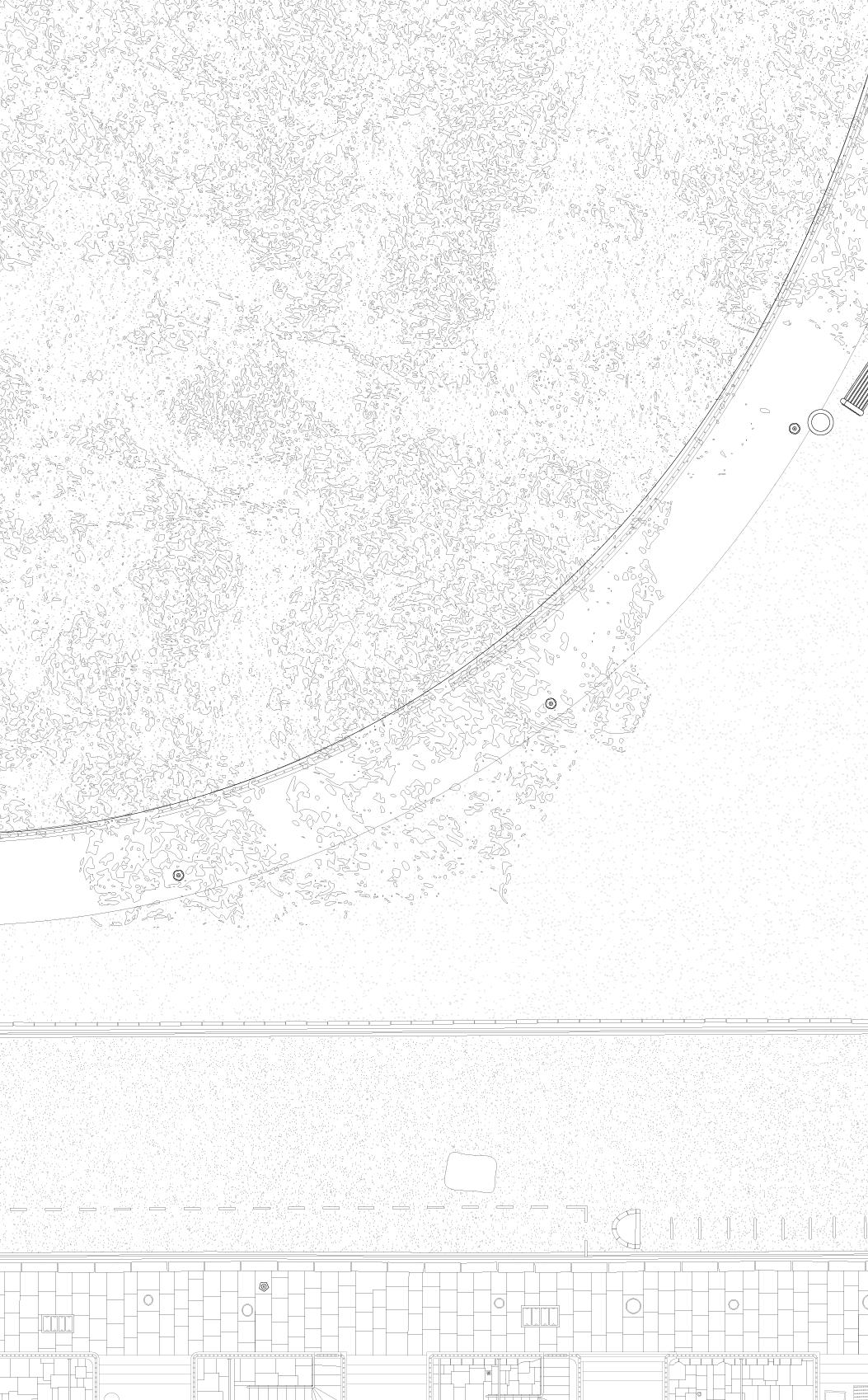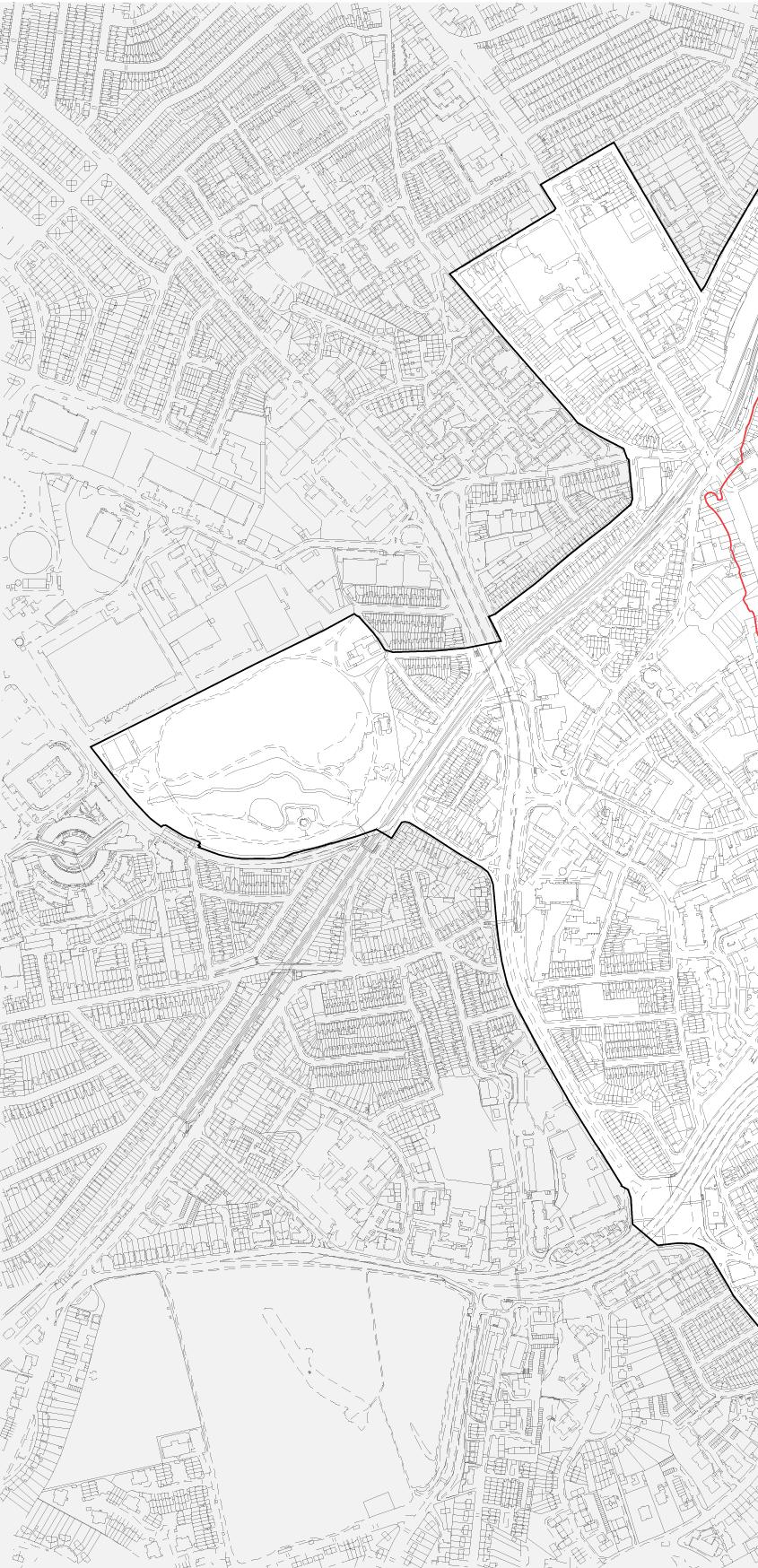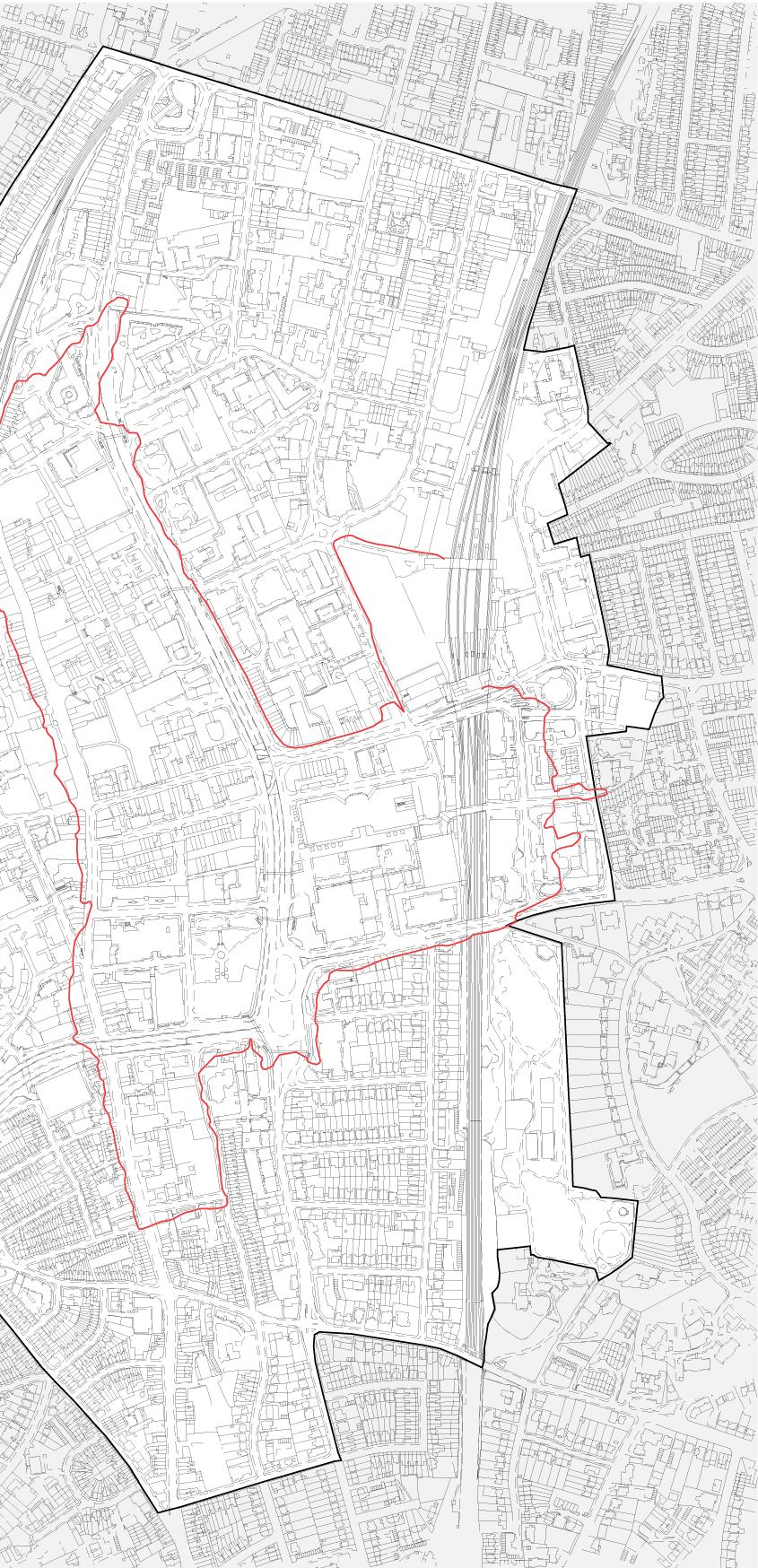










“What is this?” He asked himself. It has been almost a month since he moved here. But still, this plaza confuses him as much as the TFL’s fare-capping policy. If he remembered it right, this must be his 28th time crossing this plaza. He used to dis-regard this place except on Sundays, on which the Elizabeth line is closed for tests and maintainance, or whatever the officials say, that he is forced to take the Jubilee line and transfer to northern line at Waterloo to get to his school. He hated that. During that time crossing this plaza meant an inevitable encounter with a huge crowd of people trying to fill in every gap they could find in every carriage of the train. The plaza reminds him of the nasty smells of the tight spaces down there; the people that suddenly stops walking right in front of him; the terrible seats design of the train; the unconformtable height of his favourite place to stand and most importantly, the long walk inside the Waterloo station to transfer and the often broken carrier belt. He hated everything about those as much as he hated everything that involved him walking. The Canary Wharf Elizabeth line station is actually almost five times the distance. But still, he chooses to walk there on days it operates. He loved the spacious carriage and the air conditioning. The new but empty station. The quieter travel and mostly, the chairs are not bad. Oh, yes, the plaza. He used to disregard it, not of the space itself, but of what comes after his appearance in the space. The inevitable made it a place he wanted to avoid. A place he hated to go to for it evokes those bad memories. But things change. One night as usual, he was on his way home, walking from the Elizabeth line station. Just when he was about to turn around the corner of the street to avoid crossing that plaza, he noticed a young woman walking side-by-side at the same pace as him. He forgot what attracted his notice; perhaps it was the way she dressed, as that has always been something of his interest when observing others. The lady went straight ahead, but he turned in another direction. But he was surprised, just about 2 minutes later, he found out the lady was way ahead of him, crossed that plaza he hated, heading towards his home’s direction. “Maybe I was wrong,” he thought in his head, “Maybe crossing the plaza isn’t a bad thing if it is a shorter walking distance.” So without validating his thought, he chose the plaza unconsciously on his daily walk back home the next day.
Coming from a country where infrastructure had beed developed at a pace that the world had never seen, the first time when he heard about the elizabeth line, was that it had been under construction for almost 13 years. He was not surprised that an underground line could take such a long time.The first tube line opened up in his city back in China during the pendanmic. With the second in its planning phase, it took his city 5 years for both. He used to live in Elephant and Castle, where northen was already good enough for him. He’ve heard about all the stations of the Elizabeth line, how many architecture practices were involved and how they were welly designed. He remembered the first day it opened, he and his friend went to the Totthenham Court Road station to get the limited openning oyster card from the machines. He noticed the security, or maybe the staff at the station, who didn’t even looked at them for they were the only in that lobby, who bought 3 oyster cards and left without anything. He felt weird about this behavious of his, but he was surprised that the security did not even looked at them, not even for one second. ”He must have already been used to this,” he thought, ïn a city like london, what could not possibly happen?” That oyster card turned out as the others he have got.: it was left in one of his drawers and has been almost forgotten. But the Elizabeth Line did not, after his moving, the line had been his all time favourite in the city, but of course, nothing compares with the top front seat of the double deck bus. He remembered that at Canary Wharf, he needs to get on the train at gate number 23, if he wants to save the most time and avoid walking any longer , if his destination is his school. But if he ever wanted a cup of coffee that day, his choice would have been gate number 25 in order to change with the northern line just for one stop to get to Goodge Street. The number of the gate for him when returning would have always been gate number 5. It is the shortest walk both at the Tottenham Court Road and Canary Wharf station. The gate is literally the nearset one to the entrance.And day by day, without himself realized, his daily routine could have been concluded with these simple numbers. 5, 23 and 25 have been his numbers and he choses between them depends on what he want on a particular day. What is on the other end of the train, what if he gets on the train from the other side?
Croydon is a growing borough. It is already the most populous borough in London and aims to be London’s most enterprising borough. The borough has a need for new homes, jobs and the infrastructure to support them, whilst respecting the context of the Places of Croydon. Croydon historically was a market town, which in the medieval period benefited from the presence of an Archbishop’s residence and key trading links with the outlying villages of Addington, Sanderstead and Coulsdon to the south. A period of prosperity in the 18th century saw the development of settlements Broad Green, Woodside and Thornton Heath. Construction of the pioneering Surrey Iron Railway in 1801-03, initially between Wandsworth and Croydon, created new links for the thriving manufacturing industries along the Wandle Valley. The borough’s character was fundamentally changed by the arrival of railway connections to London in 1839 and then Brighton in 1841, with new stations appearing along the line later in the century promoting the rapid development of town centres at Thornton Heath, Norbury and South Norwood. Stations at Purley and Coulsdon likewise encouraged growth of both towns and suburbs. Croydon was incorporated as a borough in 1883 and with subsequent ivic enthusiasm rebuilding took place across its towns through the proceeding decades with new buildings and parks. By 1914, the borough had become contiguous with central London. 1915 saw the arrival of the world’s first international terminal building at Croydon Airport (the original London airport); resulting in the subsequent development of industry to the west of the town. A developing road and public transport system also paved the way for suburban expansion further to the south and south eastern edge of the borough, which was newly accessible by car. As a onsequence, areas of the countryside were developed for house building, a trend that stopped with the introduction of the Green Belt. The town experienced its most dramatic transformation following the Croydon Corporation Act of 1957. Redevelopment led to an unparalleled office boom, with almost 500,000m2 of office space built or given permission in the town between 1957 and 1964. Private developers also took advantage of new commercial opportunities, with the Whitgift Foundation notably relocating the Trinity School out of the town to release its 11 acres of land for a large new shopping centre between North End
and Wellesley Road, which itself was being transformed into an urban motorway. Increased emphasis from central government on allowing out of town shopping areas through the 1980’s and 90’s resulted in a new retail area growing along the A23 (Purley Way). A new station at East Croydon was built in 1992, and Tramlink, in 2000, providing much needed additional transport infrastructure across the borough from east to west. Croydon had become a borough of contrasts. It was a borough with a series of distinct places from Victorian railway suburbs in the north and along the railway line in the valley, towards Purley and Coulsdon to 20th century suburbs on wooded hillsides in the south and away from the railway line in the east. In Croydon Metropolitan Centre the borough has more shops in one location than anywhere else in London apart from the West End itself. However, in 2011 they faced stiff competition from other centres such as Bromley, Kingston and Bluewater. The Metropolitan Centre had more office floor space than anywhere else in South London and neighbouring districts in Surrey, but many of the offices in Croydon were seen as dated and vacancy had increased. Croydon competes against more recent office developments in Docklands, Redhill and surrounding boroughs. The challenge for the Croydon Local Plan includes rejuvenating a dated Croydon Metropolitan Centre and growing a new residential community and jobs. Improvements to the public realm in the Metropolitan Centre to attract shoppers, employers, workers and new residents are vital to its regeneration and future vitality. The growth of retailing along the Purley Way leads to its own challenges of traffic congestion at peak times. The Purley Way employment areas are prime locations owing to their accessibility to the M25 and the rest of London and the Mayor of London’s strategic employment protection recognises the demand for industrial premises in Croydon. The challenge for the Strategic Policies are to address ways of reducing traffic impact and making the shift from private transport to more sustainable modes of transport. In 2011 the borough ranked as the 14th least deprived borough in London, (out of 33 authorities). Deprivation levels, however, differ greatly, with greater concentrations in the north of the borough and in the places of Addington and Shirley. The Victorian and Edwardian areas of the borough suffer from deprivation as do some of the
inter and post-war local authority built housing estates. In general the south and east of the borough incorporate some of the least deprived areas of London. The challenge for the Strategic Policies is to reduce social, economic and environmental deprivation, look at measures to reduce unemployment, improve skills and education, community and environmental conditions and renew housing. By 2011 Croydon was the largest borough in London in terms of population (with a population of 363,000 people2) and was expected to grow by 30,000 people by 2031. They will need to have homes in which to live. Demographically Croydon is a young borough and in 2011 a quarter of its residents were under the age of 20. However, the residents of the borough are getting older and by 2031 the number of people in Croydon over the age of 65 will have increased by 41% which will bring with it challenges in terms of the types of homes that are needed in the borough and the infrastructure needed to support an aging population. In contrast, the population aged between 20 and 64 will have increased by just 2.5%4. By 2031 Croydon will also be a more diverse borough with over half of the population being a member of a black and minority ethnic community5, compared to 36% in 20016. The challenge for the Strategic Policies is to meet the needs of the population growth, the aging population and the cultural diversity. The Green Belt around Croydon together with the protection of open spaces elsewhere in the borough has ensured that over a third of the borough is open space. Whilst this is an asset, it is also a constraint for the borough as it limits the land available for new homes to house Croydon’s growing population. The open space is unevenly distributed in the borough creating some areas, mainly to the north, with degrees of deficiency in access to nature and/or open space. The challenge for the Croydon Local Plan is to ensure access and quality of existing open space is improved whilst making the most of the natural resources and adapting to climate change. The future of Croydon needs to be viewed in the context of growth and development in London and the south east of England. At a London level, direction is provided by the Mayor of London through the London Plan. Croydon has responded to the Mayor’s policy direction in the London Plan to work with neighbouring local authorities and cross borough issues have
been considered by the Croydon Local Plan. Looking ahead it will be important for Croydon to build positive relationships with the Wandle Valley regional co-ordination corridor (through south London and outwards towards Gatwick Airport) and the Brighton to London corridor, which includes working closely with the Coast to Capital Local Enterprise Partnership of which Croydon is a member. In 2036, Croydon will be London’s most enterprising borough - a city that fosters ideas, innovation and learning and provides skills, opportunity and a sense of belonging for all; an enterprising city, a Metropolitan Centre, a learning city, a creative city, a connected city, a sustainable city, and a caring city. The historic legacy of Croydon as a major trading centre within the Wandle Valley and south of central London gives richness to its streets and public spaces. The ‘sixties boom’ added many buildings with a range of varied and interesting attributes. New development in our borough has been respectful of this historic legacy, including enhancement and intensification of Croydon’s distinctive district centres and suburbs. Croydon’s suburbs will have sustainably grown to accommodate homes, including affordable homes, to contribute to the borough’s housing need. Croydon Metropolitan Centre has a friendly atmosphere with a retail and commercial centre unrivalled south of the Thames, serving the wider Gatwick Diamond economic area following the comprehensive redevelopment of the retail core. The scope for growth and new enterprises to locate is significant and the Council will be continuing to create an environment for inward investment. Large numbers of people use its shops, businesses, leisure and cultural facilities and enjoy returning to it with its compact and convenient arrangement of large stores, (including a choice of department stores), multiples and brand shops as an alternative to central London or out-of-town centres. Historic areas such as Surrey Street, Church Street and George Street, South End and the area around West Croydon station boast bijou, independent and culturally diverse shops, markets and restaurants, all within easy walking distance of North End and Wellesley Road. The cultural offer within Croydon Metropolitan Centre stems from the recently refurbished Fairfield Halls and links through to Exchange Square. The public realm is high quality and encourages outdoor life, vitality and cultural activity. Many existing
office blocks have been refurbished, converted or redeveloped into homes and a new residential community now resides in the centre which boasts an environment that is family friendly. The Council will continue to take a flexible approach to offices in the Croydon Metropolitan Centre becoming residential, whilst not undermining the opportunity for economic growth and office development around East Croydon Station and in New Town. Croydon’s connectivity has continued as its main strength, being outer London’s largest regional public transport interchange. Access to people, markets and goods, puts Croydon Metropolitan Centre at the top of the list of successful business centres. The upgrades to Brighton Mainline, rebuild of East Croydon station, the metroisation of the suburban services and continued investment into the Tram network have all assisted in retaining this status. The Square Mile and West End can be reached more quickly on public transport from Croydon than from most parts of east and west London. Croydon has the largest economy in the Wandle Valley and is the main business centre serving Gatwick Airport, supplying it with many of the people, skills and facilities it needs. Croydon’s relations with both Central London and the South Coast are stronger, providing an alternative, exciting place to do business, live and visit. In 2036, the borough’s District, Local, Neighbourhood Centres and local parades still possess their unique characteristics and support the growing communities they serve. The Council’s regeneration, capital and public realm programmes will have enhanced the centres vitality and viability. Enterprise and leisure facilities in these areas contribute to diverse local economies. The economic growth of the borough has benefitted all sections of Croydon’s community and access to work has been increased. The richness of character of Croydon’s suburbs has been respectfully enhanced and intensified through demanding the best design from new development and having a deep understanding of the qualities places have for homes, open spaces, diversity, facilities and natural resources. Their easy access to the beautiful countryside of the North Downs is an important asset and a substantial factor in people’s decision to live in the borough. 3.13 The borough has experienced an uplift in housing delivery to aid with alleviating the borough’s pressing housing need. This has led to the increased opportunity for affordable housing throughout
the borough. This housing delivery has occurred in sustainable locations, is supported by the necessary infrastructure and the growth has supported the vitality and viability of the borough’s centres. 3.14 The delivery of critical infrastructure, particularly in Croydon Opportunity Area, has been enabled by Croydon’s Growth Zone status and the Council’s willingness to embrace the opportunities presented by devolution to ensure delivery. Croydon is a borough made up of a series of varied and distinctive neighbourhoods and areas, which are referred to here as ‘Places’. Understanding and expressing the character and what makes each place special and different enables sensitive planning. The overarching strategy must make sense for the borough as a whole, and celebrate and respect the characters of different parts of the borough whilst delivering the spatial vision. All Places will grow and change, to varying degrees, as a consequence of the strategy of welcoming sustainable development and growth of the suburbs, with renewal and regeneration. The overarching thematic policies put forward in the Croydon Local Plan’s Strategic Policies have developed and are based on the distinctive character and unique places of Croydon; whilst also encouraging and creating a collective policy environment for the borough’s development needs to be delivered. The appropriate approach for the 16 Places over the plan period will be determined largely by the opportunities and constraints that exist. Opportunities for development should always consider brownfield sites in the first instance. The Borough Character Appraisal 2016, identified and analysed the characteristics of the 16 Places of Croydon, considered a number of key aspects that add to the way these Places are today and what contributes to their local distinctiveness. This Appraisal has helped to inform the production of more detailed policies contained within the Croydon Local Plan. National guidance clearly sets out the need for planning to be “spatial” - dealing with the unique needs and characteristics of places. Place making helps to deliver sustainable communities. The 16 Places are frameworks that help to steer those involved in shaping the built environment, in order to assist in creating sustainable neighbourhoods. Each Place includes a vision, map and summary of how the borough-wide thematic policies will shape the places over the plan period up to 2036.

































